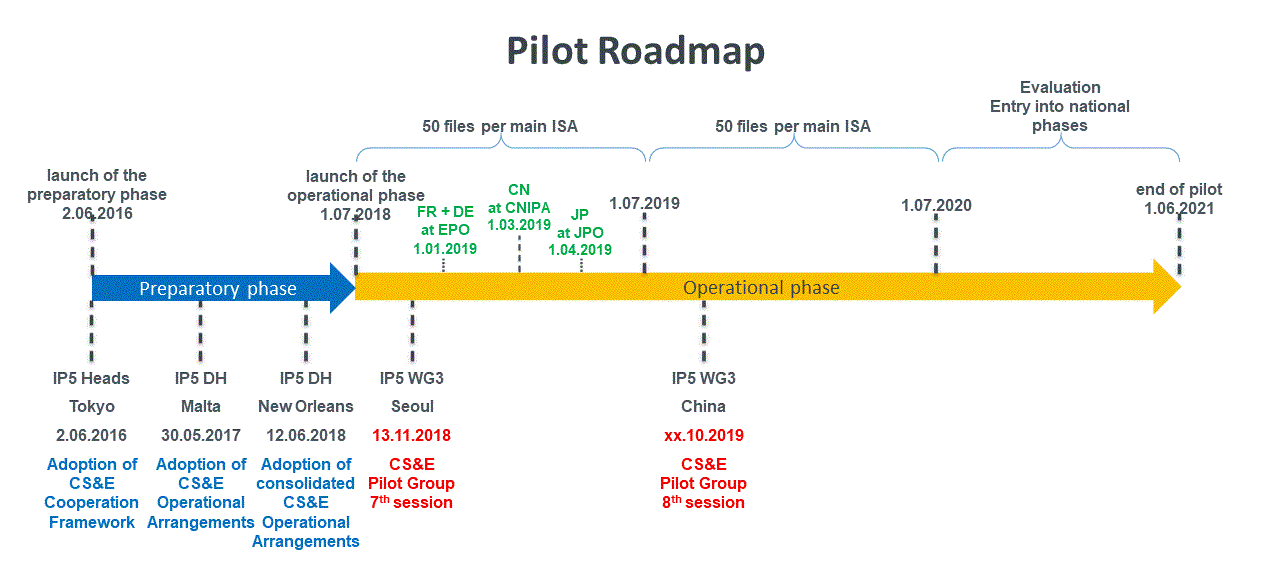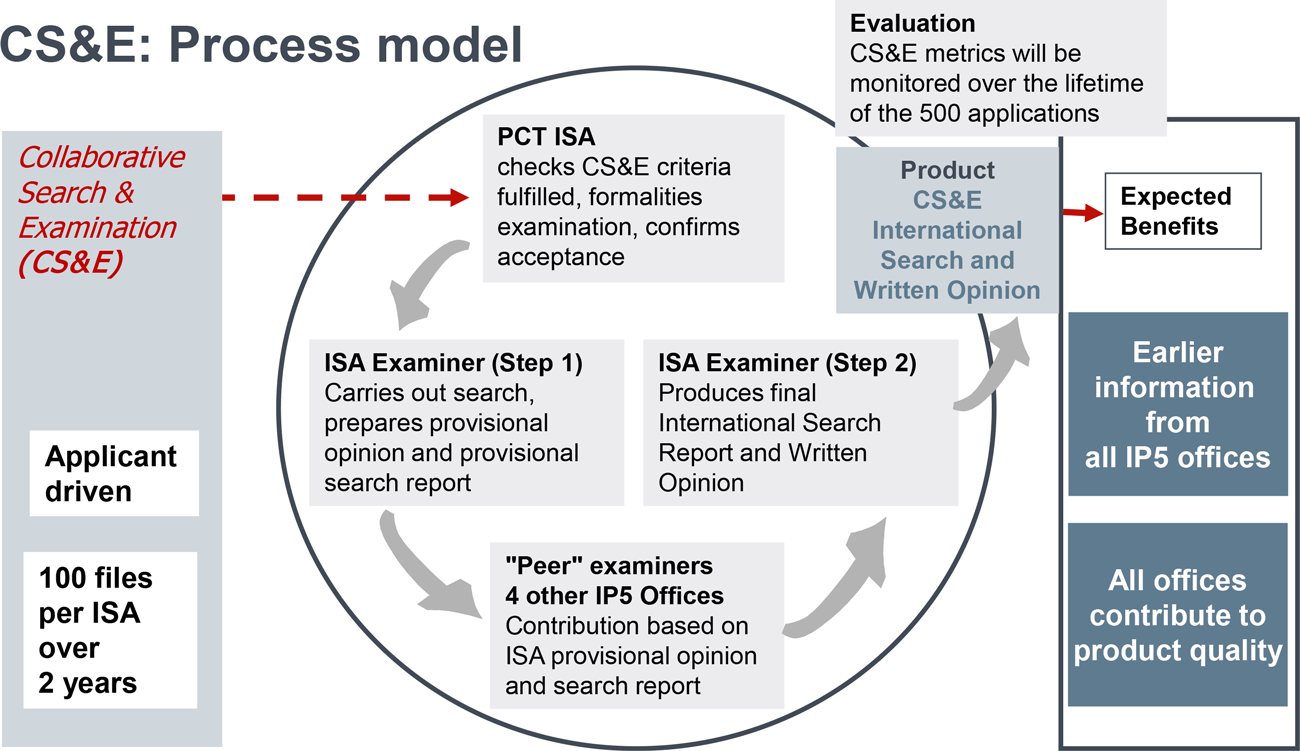Collaborative Search and Examination (CS&E)
On 1 July 2018, the IP5 Offices launched a Collaborative Search and Examination (CS&E) pilot project to test a collaborative approach to international searches under the PCT, in particular with a view to assessing the users' interest for such a new PCT product as well as the expected efficiency gains for the participating Offices. This pilot, as well as two earlier pilots between the European Patent Office (EPO), the Korean Intellectual Property Office (KIPO) and the United States Patent and Trademark Office (USPTO), follows a recommendation by the PCT Working Group in June 2010 to carry out trials of arrangements whereby examiners in International Authorities with complementary skills work together to establish a report. The pilot aims to further develop and test the CS&E concept amongst the IP5 Offices.
As of 1 July 2020, the pilot is now closed to new applications. The applications accepted will be followed through their national phase processing and the effects of the process evaluated.
The timeline below summarizes the different phases of the CS&E pilot in a Pilot Roadmap:

The main features of this CS&E pilot project are:
- an applicant-driven approach: the applications processed during the pilot are selected by applicants
- a balanced workload distribution: all collaborating International Authorities contribute to the establishment of each CS&E work product; each office will process approximately 100 international applications in its role as "main ISA" and approximately 400 international applications in its role as "peer ISA" over two years
- a common set of quality and operational standards are applied by all collaborating International Authorities when processing the PCT applications
- the final international search report (ISR) and written opinion are prepared by the main ISA, taking the views of the peer ISAs into account but not referring to or explaining any differences of opinion - the contributions of the peer ISAs will, however, be visible to the applicant through ePCT once the international search report has been received and processed by the International Bureau, and will appear on PATENTSCOPE once the ISR has been published.
The IP5 Offices agreed that at a later point in the pilot, they may also accept applications filed in languages other than English.
The model below summarizes the processes involved and some of the expected benefits.

Further details on the concept and framework of this CS&E pilot project are available via the IP5 Offices' respective websites:
- European Patent Office (EPO)
- Japan Patent Office (JPO)
- Korean Intellectual Property Office (KIPO)
- United States Patent and Trademark Office (USPTO)
The number of applications accepted by each Office as main ISA can be found here.